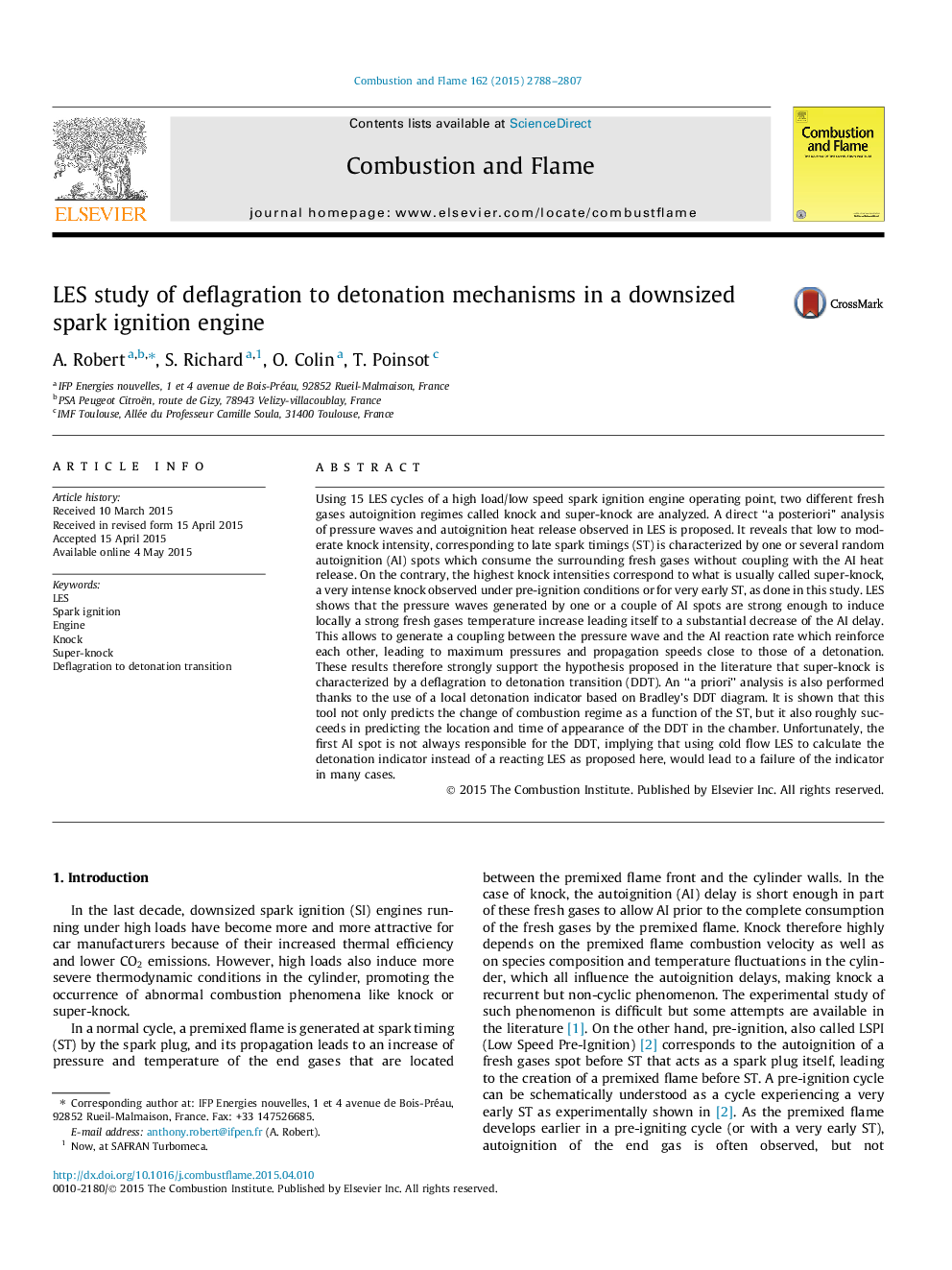| کد مقاله | کد نشریه | سال انتشار | مقاله انگلیسی | نسخه تمام متن |
|---|---|---|---|---|
| 166250 | 457747 | 2015 | 20 صفحه PDF | دانلود رایگان |

Using 15 LES cycles of a high load/low speed spark ignition engine operating point, two different fresh gases autoignition regimes called knock and super-knock are analyzed. A direct “a posteriori” analysis of pressure waves and autoignition heat release observed in LES is proposed. It reveals that low to moderate knock intensity, corresponding to late spark timings (ST) is characterized by one or several random autoignition (AI) spots which consume the surrounding fresh gases without coupling with the AI heat release. On the contrary, the highest knock intensities correspond to what is usually called super-knock, a very intense knock observed under pre-ignition conditions or for very early ST, as done in this study. LES shows that the pressure waves generated by one or a couple of AI spots are strong enough to induce locally a strong fresh gases temperature increase leading itself to a substantial decrease of the AI delay. This allows to generate a coupling between the pressure wave and the AI reaction rate which reinforce each other, leading to maximum pressures and propagation speeds close to those of a detonation. These results therefore strongly support the hypothesis proposed in the literature that super-knock is characterized by a deflagration to detonation transition (DDT). An “a priori” analysis is also performed thanks to the use of a local detonation indicator based on Bradley’s DDT diagram. It is shown that this tool not only predicts the change of combustion regime as a function of the ST, but it also roughly succeeds in predicting the location and time of appearance of the DDT in the chamber. Unfortunately, the first AI spot is not always responsible for the DDT, implying that using cold flow LES to calculate the detonation indicator instead of a reacting LES as proposed here, would lead to a failure of the indicator in many cases.
Journal: Combustion and Flame - Volume 162, Issue 7, July 2015, Pages 2788–2807